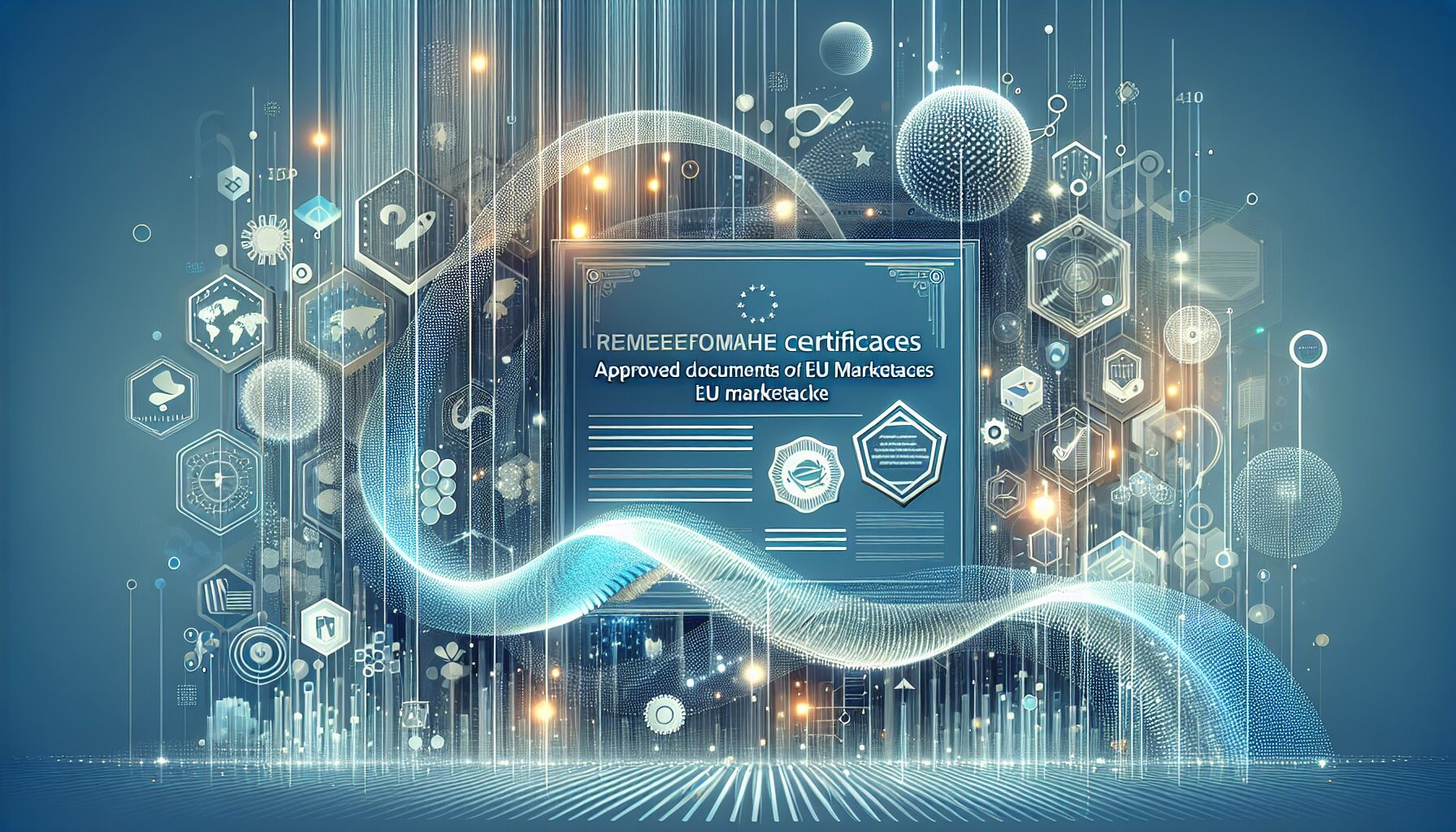About eldris
epr.eldris.ai leads the EPR sector, in fast, automated, AI Agent EU Complaince. LUCID Packaging, WEEE, and Battery Compliance for Brands, E-Commerce and Service based businesses expanding into the EU.
In This Article
- WEEE certificates are mandatory for selling electronics in the EU
- Each EU nation has its own specific WEEE compliance and registry system
- Timely and accurate submissions are critical to avoid penalties and deactivation
- Platforms like Amazon require separate certification per marketplace country
- Tools like Eldris streamline documentation and ensure full-scale compliance
Understanding WEEE Certificates: Purpose and Legal Basis
Why WEEE compliance matters across the EU
WEEE certificates, short for Waste Electrical and Electronic Equipment certificates, serve as legal testimony that a business selling electronics complies with Umweltgesetzgebung, or environmental legislation, specific to electronic waste. Mandated by the EU’s WEEE Directive (Directive 2012/19/EU), these certificates confirm that a producer, importer, or distributor of electrical goods actively contributes to reducing e-waste and recycling responsibly.
Compliance with WEEE regulations is more than environmental goodwill—it’s a legal obligation. Operating without proper WEEE registration can result in hefty fines, product takedowns from marketplaces like Amazon, or even complete business suspension. Each EU member state enforces its own systems and processes for WEEE registration, but harmonisation through the directive ensures a universally recognised legal basis. Therefore, WEEE certificates operate as pan-European proof of environmentally-responsible trade.
Retailers targeting multiple EU markets need to submit documentation proving they are fulfilling their duties in each respective country. This includes registering with national Producer Responsibility Organisations (PROs), appointing Authorised Representatives for foreign companies, and reporting sales data regularly to national authorities. Not having the correct certificates immediately flags your brand as non-compliant, often resulting in listing removals, loss of selling privileges, and reputational damage that can be difficult to reverse.

Recognized Documentation for Marketplaces
Types of WEEE certificates accepted by Amazon & others
Most leading online marketplaces—including Amazon, eBay, and Rakuten—require retailers and brands selling covered electronic equipment to submit legitimate WEEE certificates to be allowed to sell products in EU marketplaces. What qualifies as a WEEE certificate generally varies slightly by country but usually includes one or more of the following documents:
• Confirmation of registration in a national WEEE registry
• A certificate issued by a compliance scheme or Producer Responsibility Organisation
• A Power of Attorney or Authorised Representative mandate (for non-EU sellers)
• Annual reporting confirmation documents
• Proof of submission of environment-related taxes or fees
Amazon, in particular, enforces strict vetting of such documentation. Sellers are often required to upload compliance evidence directly into the Compliance Centre dashboard within Seller Central. Inaccuracies, incomplete titles, or non-accepted file formats could all delay approval or trigger rejections.
“Amazon will automatically deactivate listings that do not have valid, verified WEEE certificates in the target country.” — Compliance Officer, Amazon EU
What Sellers Must Submit
To gain full approval from platforms such as Amazon and eBay, WEEE-related documentation must be both accurate and up-to-date. Sellers are typically required to submit the following, depending on whether they are EU-based or non-EU entities:
EU-Based Businesses
• Evidence of registration in a national WEEE—and often batteries—registry
• Certification from a compliance scheme indicating current membership
• Summary report of quantities sold or placed on the market (declared to authorities)
Non-EU Sellers
• A valid Authorised Representative agreement based in the EU country
• Proof of financial guarantees, if applicable
• Registration identifiers issued by national compliance databases
It is critical that all uploads occur within the designated marketplace timelines. Inconsistent registrations across countries—such as compliance in France but not Germany—will not be accepted. Platforms like Amazon require country-by-country documentation, particularly if using Pan-EU FBA (Fulfilment by Amazon).
Where to Get Official WEEE Documents
Sellers must register with the designated national clearinghouses or compliance scheme providers in every country where they plan to market electronics. In Germany, this could be EAR Foundation; in France, Eco-systèmes; in Italy, it might be Remedia or Ecolight.
The steps to obtain proper WEEE certification typically include:
- Registering with the national WEEE authority or approved PRO
- Submitting legal business documents like VAT numbers and invoices
- Appointing an Authorised Representative (for non-EU businesses)
- Receiving the assigned WEEE registration number
- Maintaining monthly or quarterly product reports based on weight or units sold
Once your business is onboarded, the compliance provider or authority will issue either a digital certificate or registration confirmation indicating valid compliance. This document becomes the official WEEE certificate sellers upload to marketplace dashboards.
WEEE Requirements Per Country in the EU
Despite overarching EU directives, each member state enforces WEEE compliance through local interpretation and administration.
France
France requires registration with ADEME and participation in accredited schemes like Ecologic or Ecosystem. A unique identifier number (UID) must be listed on invoices and packaging materials. Annual declarations must also be filed.
Germany
Under the ElektroG Act, retailers must register with Stiftung EAR and assign a local Authorised Representative if headquartered outside Germany. Manufacturers are also responsible for return logistics planning and volume declarations.
Italy
Italy emphasises dual compliance for both WEEE and battery registration. Proof of both must be presented via compliance partners like Ecolight. Sellers need to file biannual declarations and maintain meticulous shipping records.
Regulations in other countries like Spain, the Netherlands, and Poland are similarly detailed. Missing even one aspect of national compliance could void your WEEE certificates in that country.
Tips for Fast WEEE Registration
Due to varied requirements, completing WEEE registrations efficiently requires careful planning. Here are five tips to expedite the process:
- Use a centralised compliance platform that partners with most EU authorities
- Hire only Authorised Representatives who are officially registered in their country
- Ensure product classification is accurate—errors can delay approvals
- Set automated reminders for monthly and quarterly reporting deadlines
- Pre-prepare essential documents like company registration certificates, VAT ID, and shipping manifests
Working proactively saves time. Registration errors can sometimes take weeks to resolve and may impact your rankings and availability on marketplaces.
Uploading Proof to Amazon and Other Portals
Once certificates are secured, the uploading process needs to be precise. For Amazon sellers, go to Seller Central → Compliance Centre → Product Compliance Documents. Navigate to the section for Producer Responsibility topics like WEEE and batteries.
Upload the relevant documents for each country where your listings exist. Some common issues to avoid include:
- Files with incorrect naming formats (e.g., missing country codes)
- Outdated certificates from previous years
- Misuploaded documents (e.g., battery instead of WEEE)
- Unreadable scans or foreign language files without English translations
After submission, verify your status weekly. Platforms may request clarifications or additional verification. If approved, Amazon will mark your ASINs as “compliant”, restoring full sales functionality.
Common Challenges with WEEE Documentation
Even experienced sellers face issues surrounding WEEE compliance. Some of the most prevalent hurdles include:
- Delayed issuance of WEEE numbers due to backlog at national registries
- Difficulty appointing Authorised Representatives with a local tax ID
- Differing definitions of reporting units per country (weight vs. item)
- Lack of English-language support from smaller compliance schemes
- Frequent changes in local environmental law that impact obligations
These roadblocks can severely deter market entry or expansion plans. Worse, they can automatically result in product deactivation across channels—even if the compliance issue is minor or procedural.
How Eldris Simplifies WEEE Onboarding
Eldris offers a centralised platform for managing all aspects of WEEE compliance across markets in the European Union. Whether you’re a startup only selling in one country or a multinational operating in ten, Eldris simplifies onboarding through automation, expert verification, and scalable documentation management.
Features include:
- Instant generation of required WEEE certificates based on uploaded company data
- Direct API integrations with Amazon, Zalando, and eBay for proof uploads
- Live compliance tracking dashboards
- Partner network of certified Authorised Representatives in 27 EU countries
- Multilingual support for cross-border sellers
With Eldris, sellers can confidently remain compliant while focusing on business growth. Learn more about Marketplace & EU Compliance Documentation
Conclusion: Stay Compliant, Sell Confidently
[CONCLUSION_CONTENT]
Securing valid WEEE certificates isn’t just a legal necessity—it’s a strategic move to grow your brand sustainably across the European market. With directives intensifying and regulatory scrutiny increasing, failing to adhere can lead to serious repercussions. By understanding local obligations, submitting the correct documents, and leveraging digital compliance tools like Eldris, sellers avoid costly pitfalls and unlock the full selling potential of major platforms. Read a related article WEEE producer obligations within the EU
Great guide on weee-certificates-accepted-documentation-marketplace-approval – Community Feedback
What documents are accepted as valid WEEE certificates?
Accepted documents typically include an official WEEE registration certificate, producer compliance scheme confirmation, or WEEE registration number confirmation issued by relevant national authorities.
Do Amazon and other marketplaces require WEEE proof?
Yes, major marketplaces like Amazon require sellers to provide official proof of WEEE compliance—such as a valid certificate or registration number—for eligibility to sell electrical and electronic goods in the EU.
Where can sellers obtain WEEE certificate templates?
Templates are often available from national WEEE registers, producer compliance schemes, or expert EPR compliance providers who support onboarding and ongoing compliance.










